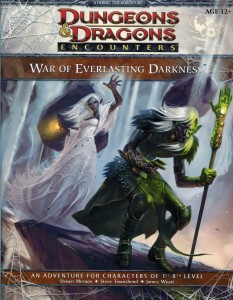While the Dungeon’s Master team enjoys some well-deserved vacation time, we’re breaking out the greatest hits and shining a spotlight on a few of our favourite articles from 2012. We’ve searched for hidden gems that our newer readers might have missed and our long-time readers will enjoy reading again. Enjoy a second look at these greatest hits from Dungeon’s Master.
Many years ago my home group played an extended campaign in the Ravenloft setting. In this setting each country (or Domain as they’re called in Ravenloft) is ruled by a Lord. The overwhelming majority of these Lords are undead and exceptionally evil. Any campaign that takes place in Ravenloft is going to be filled with every kind of undead imaginable. Most Lords have undead armies at their disposal so Skeletons, Zombies and Vampire Spawn are the typical foot soldiers that PCs will engage, at least initially.
As much as we loved playing in Ravenloft we eventually just got sick of fighting undead. So when we finally escaped from the horrific setting and returned to the Forgotten Realms we decided as a group that none of the DMs would use undead for a long time to come. For years following our Ravenloft expedition our party never ran into a single undead opponent – which we were ok with.
Looking back on our decision to ban undead from the game I realize that it wasn’t so much undead that we were sick of but the plainness of the undead we fought most often. The only variation between the Skeletons was the weapon in their hand. Even though each new Monster Manual presented us with plenty of new undead creatures, none were really that different than what we’d seen before.
I suspect there are other DMs and gaming groups that have gone through undead fatigue much like my group did, and I’ll bet that in many cases it was the lack of variation that led to the problem. Before taking an extreme measure like we did all those years ago, take steps to make your undead more interesting. You don’t necessarily have to give them new powers (although that is certainly an option); you just have to make them interesting. By describing a detail as simple as their original race you can add life back into your undead, so to speak. And if you feel that giving them access to their racial power that’s certainly a way to make even the most boring and predictable undead foe something to fear again.
From October 15, 2012, Dungeon’s Master once again presents: Undead of Different Races.

